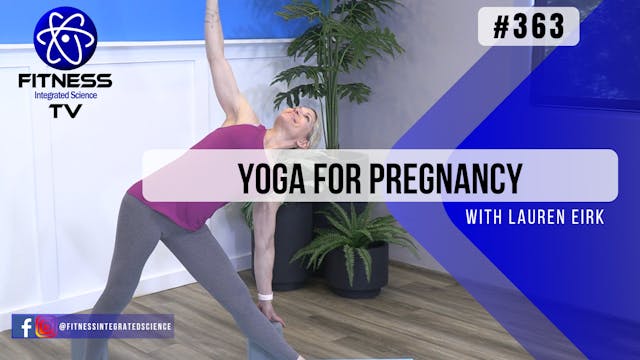Pelvic floor dysfunction is the inability to correctly relax and coordinate your pelvic floor muscles. When we strain, it puts pressure on this region. As we age, these muscles can become weak due to childbirth, standing for long periods of time, heavy lifting, straining to defecate, and some sports.
In this video, learn how to subtly engage these muscles on purpose when sitting, laying down, breathing, and exercising. Take the time to practice these exercises daily, with diaphragmatic breathing and abdominal bracing. A Pilates ring is used in this video as a resistance tool, but a small ball, pillow, or elastic band can be substituted.
Some causes of pelvic floor dysfunction include: Traumatic injuries to the pelvic area (like a car accident), pregnancy, overusing the pelvic muscles that eventually leads to poor muscle coordination, pelvic surgery, being overweight, and aging. Symptoms include: frequently needing to use the bathroom, constipation, straining pain during your bowel movements, leakage, painful urination, and lower back, genital, or rectal pain.
Purchase products on Amazon:
Yoga Mat: https://amzn.to/2ZDSMrH
Pilates Ring: https://amzn.to/32neu4Z
20220516_01_Final
Up Next in Deep Core
-
Video 363 "Yoga for Pregnancy" (30 mi...
The focus of this workout is to strengthen pelvic floor muscles and hips in order to support all stages of pregnancy. You will need Yoga blocks and a blanket to sit on for support. Cues are given throughout to modify the workout based on the trimester and specific needs.
Warm Up (seated)
Pelv... -
Video 364 | Pilates for Pelvic Floor ...
The Pilates Mat sequence is the focus for this workout as we incorporate many of the most effective pelvic floor exercises while practicing diaphragmatic breathing exercises.
This workout slowly begins from a supine position as we practice pelvic tilts and pelvic floor engagement. Learn to contr... -
Live Event | Pilates Deep Core and Sh...
This Pilates class will address not only the typical spinal positions that we train for abdominals and spinal erectors, but also for the deep cope muscles. We will address pelvic floor dysfunction, which is the inability to correctly relax and coordinate your pelvic floor muscles. When we strain...




4 Comments